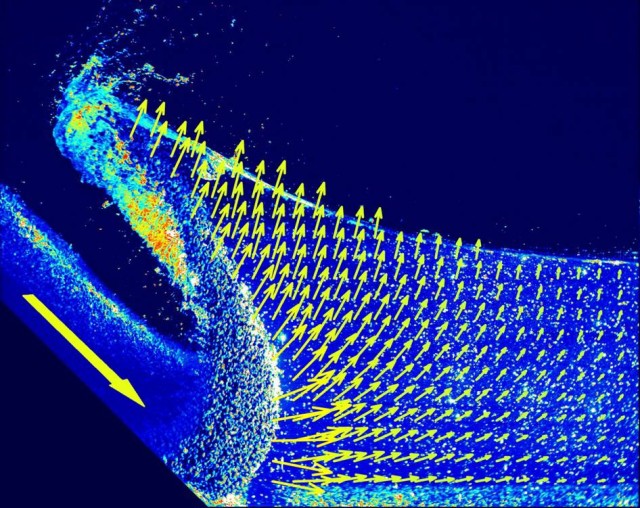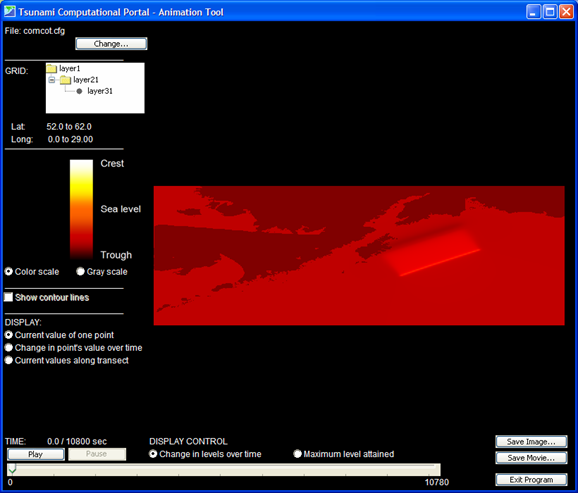How the Portal Will Help: An Example

| 
|
Consider the case of a university researcher who has been working on a computational model
that simulates how the runup caused by a large wave erodes the beach around bridge columns
and undermines their stability. His graduate students wrote the program to require data in
a format they made up, and to generate data in a slightly different format that is turned
into an image by another program they wrote. The group had to design their own input data,
based roughly on bathymetry data from NOAA and topography data from USGS. Although they
have written two research papers about their results, there are no formal documents
describing the program structure, nor are their programs, input data, or output data
available to other people. Not many people know of the model, unless they happened to
hear the preliminary results the researcher presented at a technical conference.
A researcher at NOAA is interested in testing the validity of the model, but it only runs
on an out-of-date computer at the university, using software that is not available for
other machines.
Now suppose that the same computational model has been contributed to the Tsunami
Computational Portal. This time, the NOAA researcher can find a complete set of documentation
describing the processes modeled by the program, its limitations, and the assumptions that
the original research group made in developing the program. Copies of the group's two research
papers are available, too. The NOAA expert can quickly get an understanding of how the model
really works and what kinds of data it has been tested on so far. She decides to apply the
model to a scenario that is similar to the 1960 tsunami at Hilo (Hawaii), since she is familiar
with the aftermath reported by the post-tsunami survey team. She uses the Portal's graphical
interface to choose a mapped area that is similar to the bay at Hilo. The Portal then guides
her through the process of selecting input parameters that mimic the direction and force of the
wave that crossed the Pacific to strike Hilo. An hour later, she is able to view the results
graphically. Comparing them with what she knows about Hilo, she notes that the computational
model underestimates the runup where the tsunami crossed over an underwater reef. She uses the
Portal to posts her commentary, describing the discrepancy. Because the Portal maintains
complete information about the "experiment" she just ran, other Portal users can not only see
her comments, but view detailed information about the scenario and even run the model again
with some slight tweaking of the parameters. A lively discussion ensues, using the Portal's
discussion forum. The original modelers become intrigued with the problem and, in response
to suggestions from a third research group, make a small change to the model. The NOAA expert
reruns her scenario and finds that this time, the results are consistent with what actually
happened in 1960.
Without the Portal infrastructure, it is unlikely that the NOAA researcher would be able
to run the model in the first place. The discrepancy might remain undetected, the collaborative
discussion yielding the new insights would not have taken place, and the model would be less
accurate.